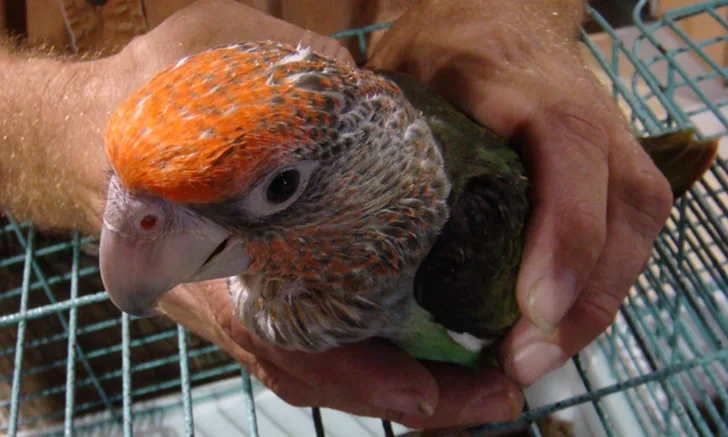Image Gallery: Avian Restraint
Thomas N. Tully, DVM, MS, DABVP (Avian), ECZM (Avian), Louisiana State University School of Veterinary Medicine

Avian patients come in many shapes, sizes, and species. Veterinary team members can safely handle and restrain these patients by following basic guidelines that reduce patient stress and help protect the patient, restrainer, and veterinarian. Many veterinarians may be accustomed to restraining avian patients while simultaneously performing the examination; however, a thorough external physical examination is best achieved when a team member restrains the patient.1,2
Images courtesy of Tom N. Tully, DVM, MS, DABVP (Avian), ECZM (Avian).

FIGURE 1
General guidelines
Evaluate every avian patient's overall condition to ensure it can handle the stress associated with restraint and examination. A patient that is unresponsive to external stimuli and/or is exhibiting neurologic signs (eg, seizure activity, severe ataxia), signs of respiratory distress, or severe depression should not be restrained in most cases.3 If restraining a bird is questionable, the veterinarian should decide whether the stress will have an overall positive effect. If the answer is No, the bird should not be restrained but allowed to acclimate to the surroundings and recover from the stress of transport within a critical care unit4 that provides both thermal and oxygen support.
If the patient's condition is life-threatening, emergency care using quick minimal restraint must be provided (eg, placing an air sac breathing tube in a patient with a tracheal blockage, medicating a patient to reduce seizure activity). When emergency care is required for an avian patient in critical condition, always have the necessary supplies in place before treatment to expedite application.
A patient that becomes weak or is unable to struggle during restraint should be placed in a critical care unit with supplemental oxygen or returned to its pet carrier to recover, depending on its condition.2
The last procedure performed on a restrained avian patient before it is returned to the carrier or cage should always be administration of oral medication or tube feeding. The patient should not be restrained after per os nutritional supplementation and/or therapeutic agents have been provided because regurgitation and aspiration can easily occur if the patient struggles.
This article originally appeared in the March 2017 web issue of Veterinary Team Brief.